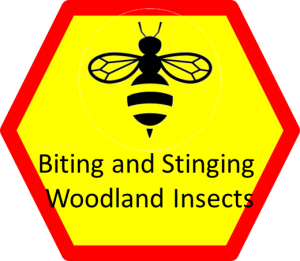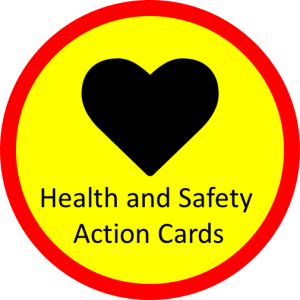Insect bites and stings are common and usually only cause minor irritation. However, some stings can be painful and trigger a serious allergic reaction.
In the UK, insects that bite include midges, mosquitoes, fleas, bedbugs and, although not strictly insects, spiders, mites and ticks, which are arachnids. Insects that sting include bees, wasps and hornets. An insect bites you by making a hole in your skin to feed. Most insects sting as a defence by injecting venom into your skin. See a more comprehensive list by clicking on the link below.
Picture Reference [6]
As with most flora and fauna threats there are a number of actions you can take to prevent being bitten or stung:
- Remain calm and move away slowly if you encounter wasps, hornets or bees – don’t wave your arms around or swat at them.
- Cover exposed skin – if you’re outside at a time of day when insects are particularly active, such as sunrise or sunset, cover your skin by wearing long sleeves and trousers.
- Wear shoes when outdoors.
- Apply insect repellent to exposed skin – repellents that contain 50% DEET (diethyltoluamide) are most effective.
- Avoid using products with strong perfumes, such as soaps, shampoos and deodorants – these can attract insects.
- Be careful around flowering plants, rubbish, compost, stagnant water, and in outdoor areas where food is served.
- Never disturb insect nests – if a nest is in your house or garden, arrange to have it removed (GOV.UK has details about pest control servicesand how your local council can help).
- Avoid camping near water, such as ponds and swamps – mosquitoes and horseflies are commonly found near water.
- Keep food and drink covered when eating or drinking outside, particularly sweet things – wasps or bees can also get into open drink bottles or cans you’re drinking from.
- Keep doors and windows closed or put thin netting or door beads over them to prevent insects getting inside the house – also keep the windows of your car closed to stop insects getting inside.
If Stung or Bitten:
- Remove the sting if you can see it.
2. Clean the wound with soap and water.
3. Apply something cold to the skin – for example a damp cloth or ice pack.
4. Raise the hand, foot or leg if that’s where bite or sting is.
5. To reduce the risk of infection apply antiseptic to the bite or sting and try not to scratch it or burst any blisters.
Tick Bites can be more serious than other insect bites and the first aid treatment for them is different.
- If you find a tick on your or your child’s skin, remove it using a pair of tweezers that won’t squash the tick (such as fine-tipped tweezers) or a tick removal tool (available from pet shops or vets).
- Gently grip the tick as close to the skin as possible and pull steadily away from the skin without crushing the tick. If you use a tick removal tool, follow the manufacturer’s instructions.
- Wash your skin with water and soap afterwards, then apply an antiseptic cream to the skin around the bite.
If going out in the field you may find it useful to take a set of these Flora and Fauna Health and Safety Cards they act as a reminder of what to do in an Emergency should arise. Often these can be stressful situations and a simple reminder can be very helpful. Click on the link below to access the cards.


